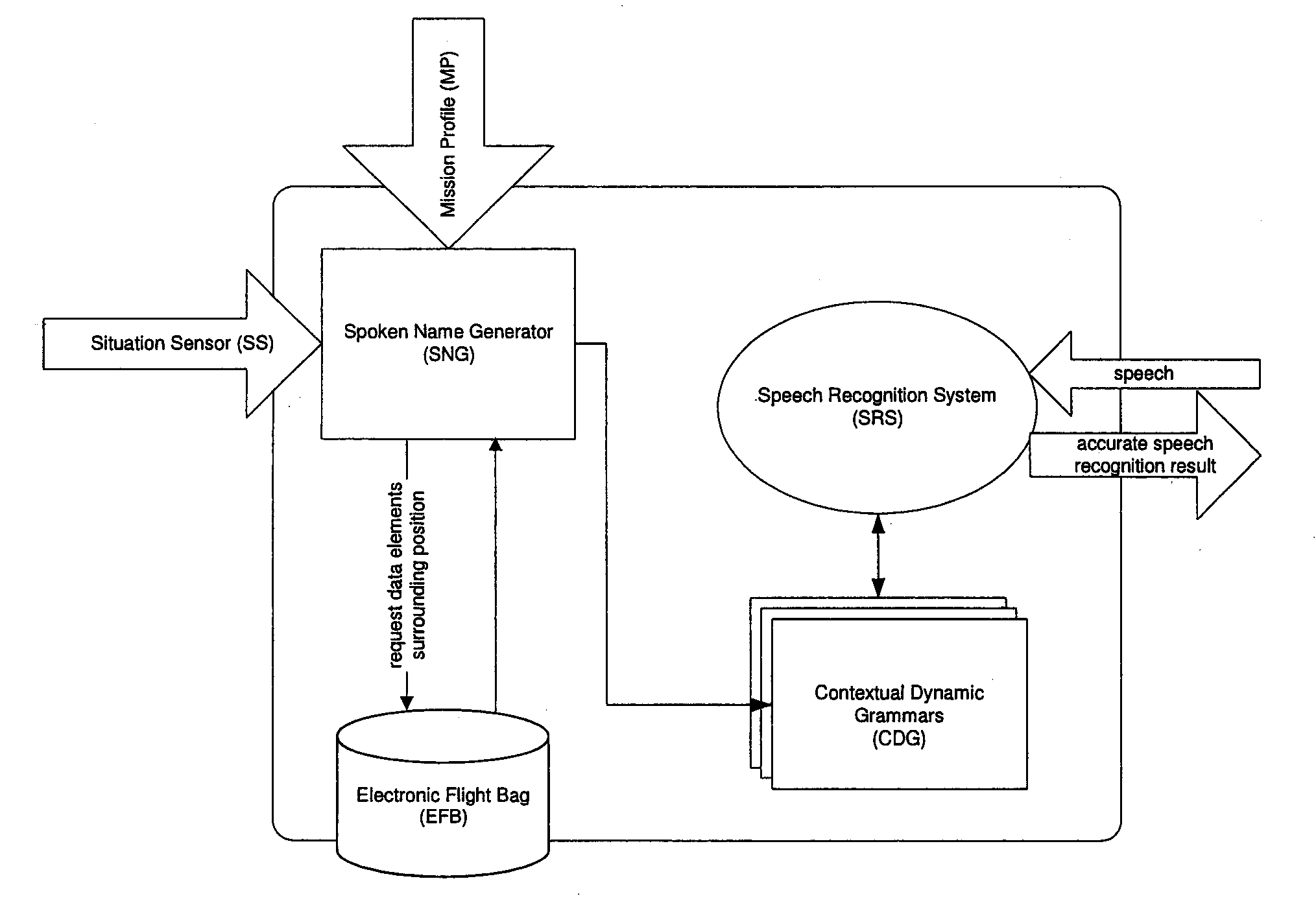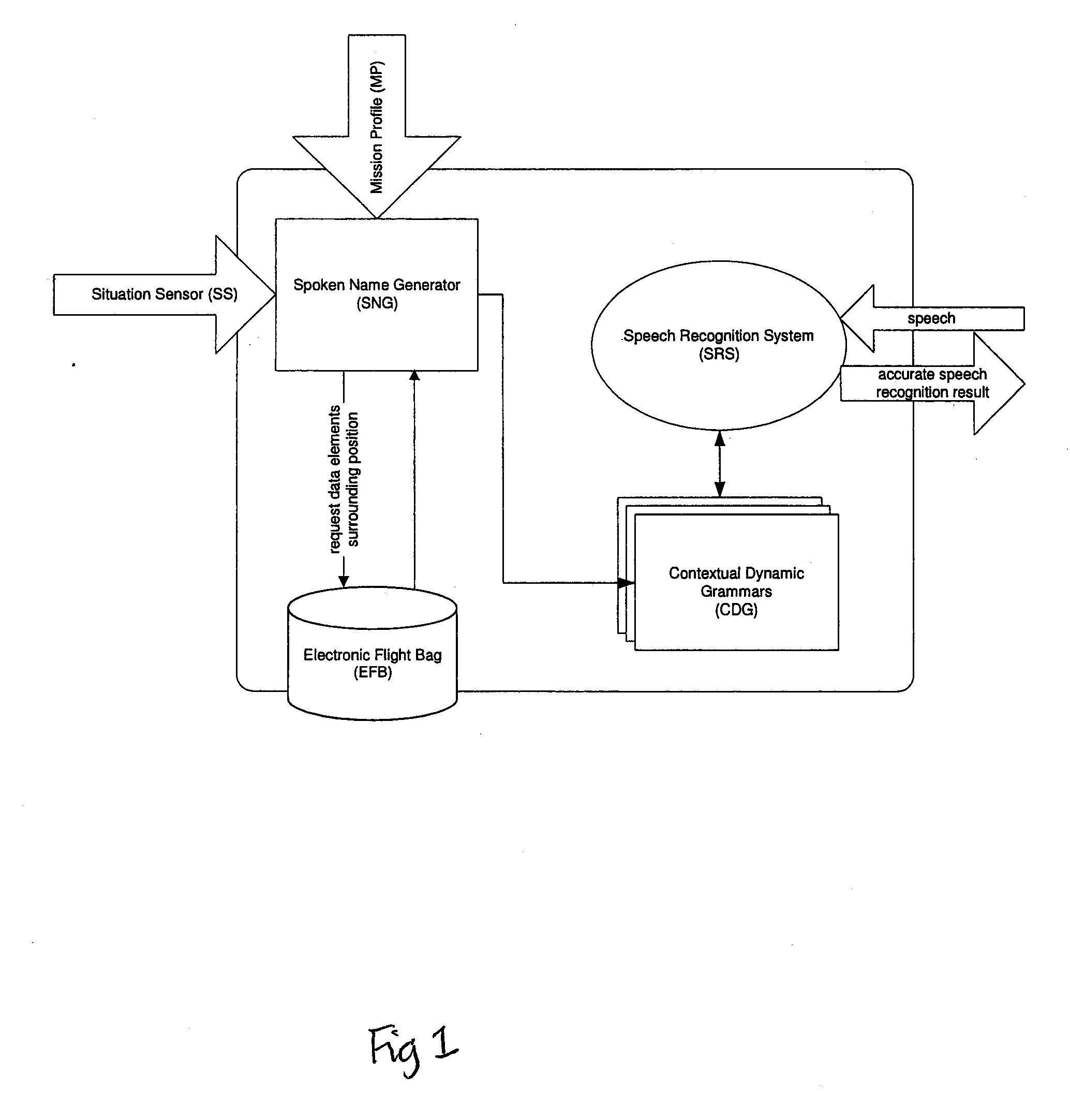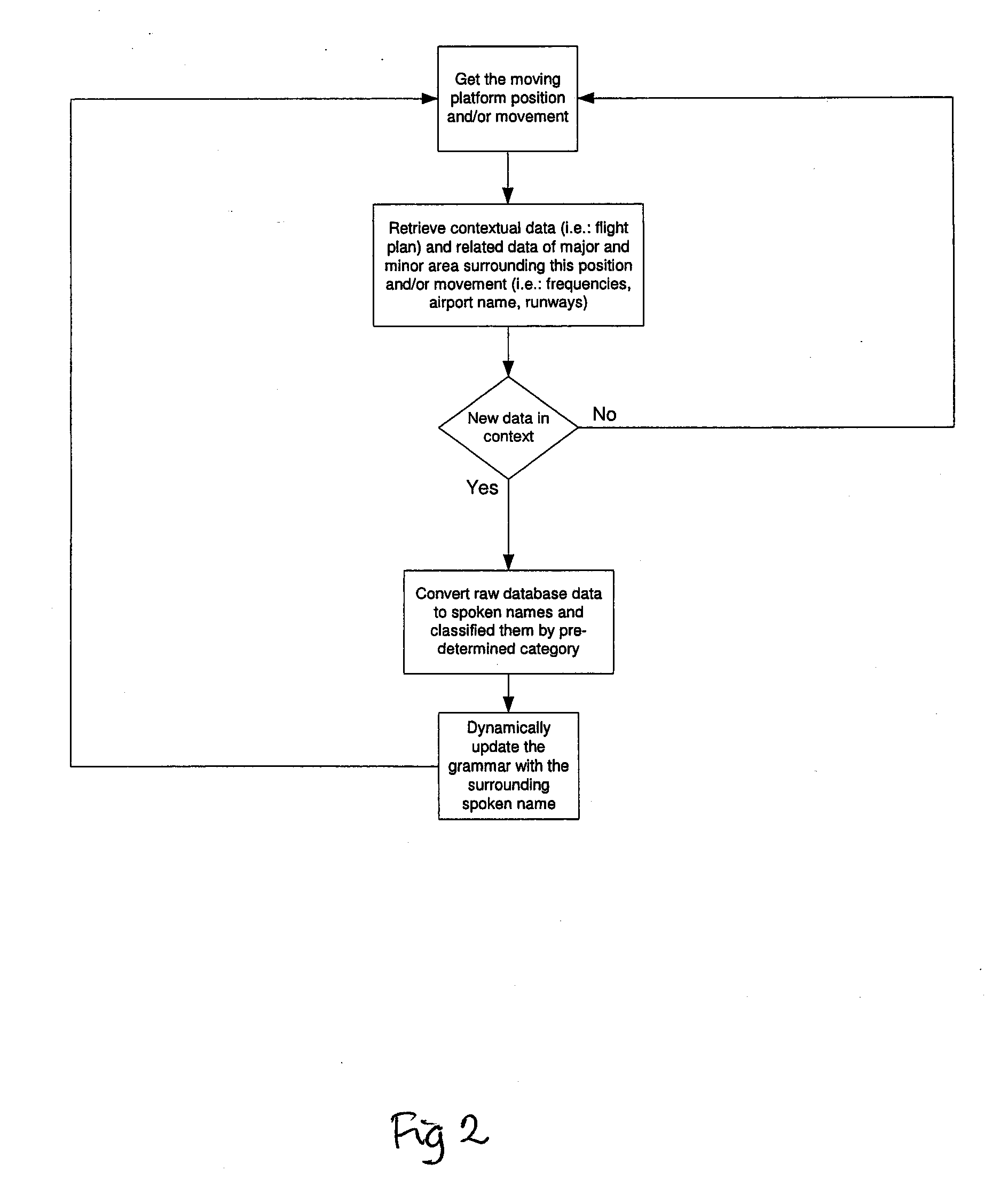System and method for generating and using an array of dynamic grammar
a dynamic grammar and array technology, applied in the field of system and method for generating dynamic grammars, can solve the problems of reducing the performance and accuracy of a speech recognition system, large data base, and similar problems in other environments, so as to reduce the perplexity of grammars, improve the overall size of contextual dynamic grammars database, and improve the performance
- Summary
- Abstract
- Description
- Claims
- Application Information
AI Technical Summary
Benefits of technology
Problems solved by technology
Method used
Image
Examples
Embodiment Construction
)
[0021]Generally stated, the invention in one aspect (FIGS. 1-2) includes interactions between a Situation Sensor, a Spoken Name Generator, an Electronic Flight Bag, a Contextual Dynamic Grammars database, and a Speech Recognition System that interfaces with a subassembly.
[0022]The following terms and acronyms are used in this disclosure and in the drawings:
[0023]1. SS—Situation Sensor;
[0024]2. SNG—Spoken Name Generator;
[0025]3. EFB—Electronic Flight Bag;
[0026]4. CDG—Contextual Dynamic Grammars database; and
[0027]5. SRS—Speech Recognition System.
In one embodiment, the subassembly with which the Speech Recognition System interfaces is exemplified by a communications or navigation radio, a flight director, or an autopilot in a moving platform such as an aircraft.
[0028]Initially, the Spoken Name Generator receives signals from the Situation Sensor. The signals include contextual data that are indicative of the position and speed of a moving platform. As mentioned earlier, in some embod...
PUM
 Login to View More
Login to View More Abstract
Description
Claims
Application Information
 Login to View More
Login to View More - R&D
- Intellectual Property
- Life Sciences
- Materials
- Tech Scout
- Unparalleled Data Quality
- Higher Quality Content
- 60% Fewer Hallucinations
Browse by: Latest US Patents, China's latest patents, Technical Efficacy Thesaurus, Application Domain, Technology Topic, Popular Technical Reports.
© 2025 PatSnap. All rights reserved.Legal|Privacy policy|Modern Slavery Act Transparency Statement|Sitemap|About US| Contact US: help@patsnap.com



